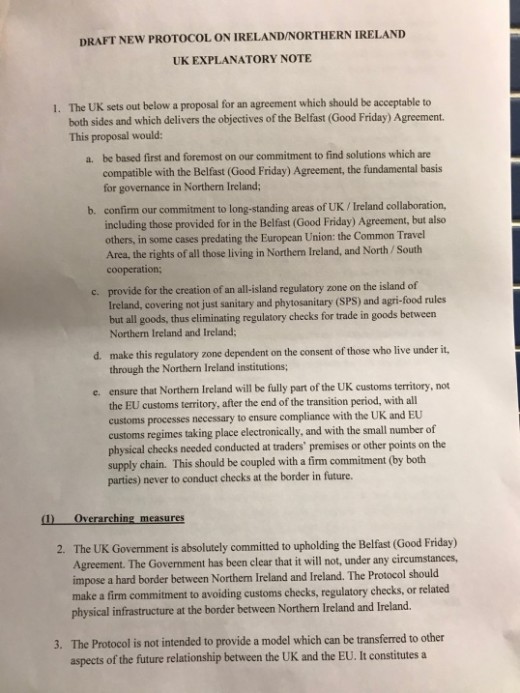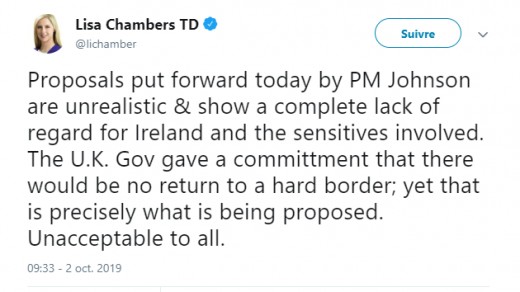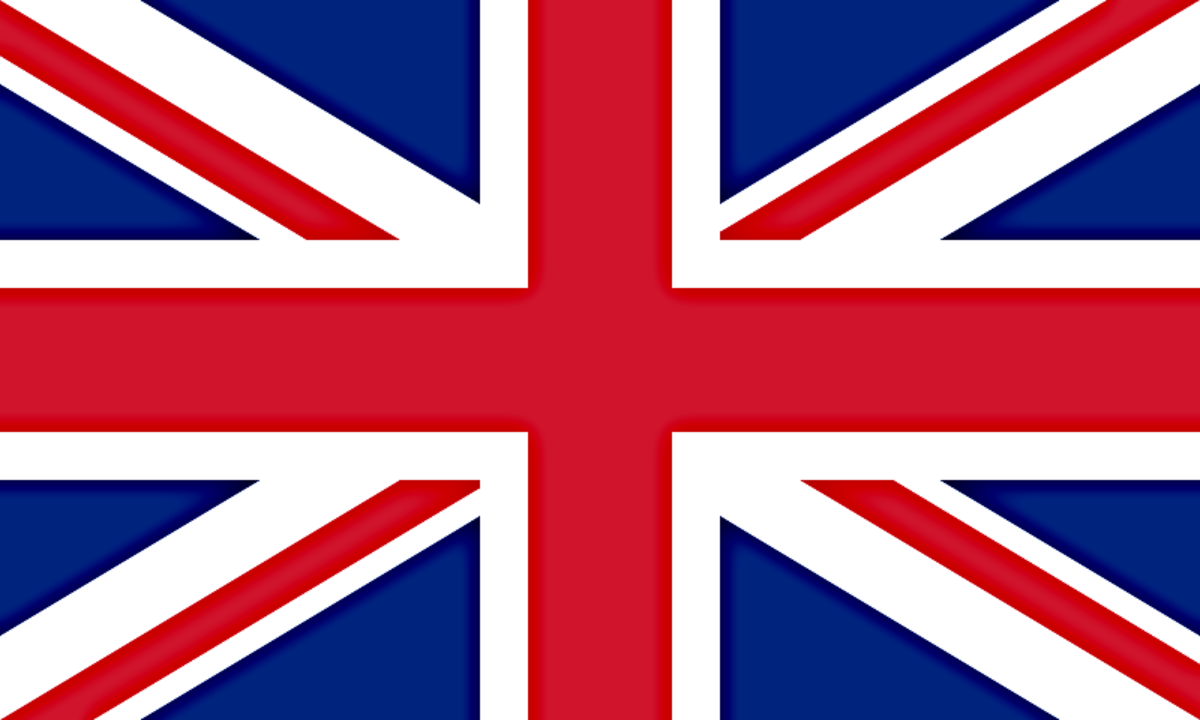What Are the Plans of Boris Johnson Over the Irish Border?
10/03/2019
WHAT ARE THE PLANS OF BORIS JOHNSON OVER THE IRISH BORDER?
BY: DESWENSIC
The Prime Minister proposed today to place Northern Ireland in a temporary regime of four years in a letter send to the UE. The proposal implies to pseudo-borders, one between the Republic of Ireland and Northern Ireland and other one around the Great Britain.

Antecedents
After a war of independence against British rule, the Anglo-Irish Treaty was signed in 1921 which saw a border delineation between the north and south of Ireland, with six counties remaining under British rule. In the late 1960s, nationalists, mainly self-identified Catholics, protested for equal rights for the likes of social housing and voting rights. This triggered three decades of violence between nationalists who wanted a reunification of Ireland, and unionists, mainly Protestants who aimed to remain within the UK.
The signing of the 1998 Good Friday Agreement ended the violent period which saw over 3,600 people being killed. Among other issues, such as cross-border initiatives, it was agreed that Stormont (the Northern Ireland Assembly) would perform under a model that would share power between parties in order to lessen sectarian divisions. The two largest parties in the Northern Ireland Assembly are Sinn Féin, the left-wing nationalist party and the conservative Democratic Unionist Party (DUP) aligned with unionists.
What is the 'backstop'?
The "Backstop Agreement" was a consensus reached between the UK and EU to ensure that a hard border with custom checkpoints and infrastructure is avoided. The agreement would act as an “insurance policy” in the event of a no-deal. The EU vision of a backstop would see Northern Ireland remain aligned with some EU customs regulations. The UK, however, is at complete odds with the EU on this, saying that Northern Ireland would need to follow suit on leaving the EU’s customs territory.
Brexit Era
During Brexit, the situation of the Border has been critical and one of the main reasons why there has not been an accord during the Theresa May Era. President of the European Commission Jean-Claude Juncker says that the UK cannot have the “same privileged position as a member state” when it comes to matching the EU’s custom and goods regulations, meanwhile the Irish government's main aim is to avoid a return to a hard border. Northern Ireland is in its majority against a hard border as have said Mary Lou McDonald, President of Sinn Féin that in her inaugural address, she spoke of her party's “ultimate goal of Irish unity”.
Theresa May is at an "impasse" when it comes to negotiations with the position of the border being the sticking point. Hardline Brexiteers aim for the north to be treated no differently than the rest of the UK. In her Chequers plan, May aimed for the country to maintain a common rulebook thus maintaining trade harmony with the EU.
The issue is that should Northern Ireland diverge from EU customs rules, as Brexiteers suggest the differing regulatory rules between the north and south brings forth again the stumbling block of how customs checks would run.
What is happening now?
Gordon Rayner, Political Editor of The Daily Telegraph, tweeted the official letter send by Johnson Boris to Jean-Claude Junker that states the plans of Johnson for the Irish Border.


In the letter, Johnson wrote a draft for the new protocol at the Irish border. According to The Guardian, the plans would mean that Northern Ireland would essentially remain in the single market for all goods – therefore in regulatory alignment with the EU – but would leave the customs union, along with the rest of the UK. This requires customs checks on the Irish border in order to reduce the scope for smuggling, to protect the integrity of the single market and to assure third-party trading partners that the border holds.
The reactions
The former Northern Ireland secretary Lord Hain said the Brexit plan could break the law and “sabotage” the Good Friday agreement.
The Labour peer said by insisting on extra customs checks and different trading relationships across the Irish border the government “is proposing to break the law”.
He said it would breach Britain’s own Withdrawal Act 2018, which includes a detailed clause specifically banning “border arrangements between Northern Ireland and the Republic of Ireland after exit day that feature physical infrastructure, including border posts, or checks and controls, that did not exist before exit day”.
Also, Lisa Chambers, Spokesperson on Brexit showed on Twitter her disagreement with these measures:

Philippe Lamberts, a member of the European parliament’s Brexit steering group, said there was no confidence that Johnson could even guarantee the Commons’ support for his proposals.
He said: “We are in a worse situation than we were facing Theresa May because at least Theresa May had a working majority … The last thing the EU wants to do is to make concessions that won’t fly in Westminster.
“My interpretation of Boris Johnson’s actions since being prime minister is to take the United Kingdom out of the European Union without a deal but with the opportunity to shift the blame to someone else.”
https://www.euronews.com/2018/09/25/why-is-the-irish-border-issue-so-complex-euronews-answers
© 2019 Discovering The English Speaking World








